
Signal processing is one of the core technologies indispensable in fields such as electronic engineering, communication technology, and automation control. It not only relates to the acquisition, conversion, analysis, and expression of information but also directly affects the performance of systems and the effectiveness of applications. MATLAB, as a high-performance numerical computation and visualization software, has extensive applications in the field of signal processing. It not only provides a rich library of functions and toolboxes, supporting everything from simple signal analysis to complex system design, but its intuitive interface and powerful programming capabilities make learning and researching signal processing more efficient and convenient.
This article recommends the book “MATLAB Signal Processing”, which aims to comprehensively introduce readers to the applications of MATLAB in the field of signal processing through an easy-to-understand approach, including basic theories, toolbox usage, algorithm implementation, and practical case analysis.
The content covers various aspects such as parameter models and power spectral estimation of random signals, array signal processing, time-frequency analysis, and higher-order spectral analysis, with each section accompanied by detailed theoretical explanations and examples, aiming to help readers systematically master the theoretical knowledge of signal processing and proficiently apply MATLAB in practical operations.

Part One: Basic Theory
The book first introduces the parameter models of random signals and power spectral estimation, including estimation of correlation functions, classical power spectral estimation, AR model power spectral estimation, and power spectral estimation methods based on eigen-decomposition. These basic theories lay a solid foundation for subsequent signal processing techniques.
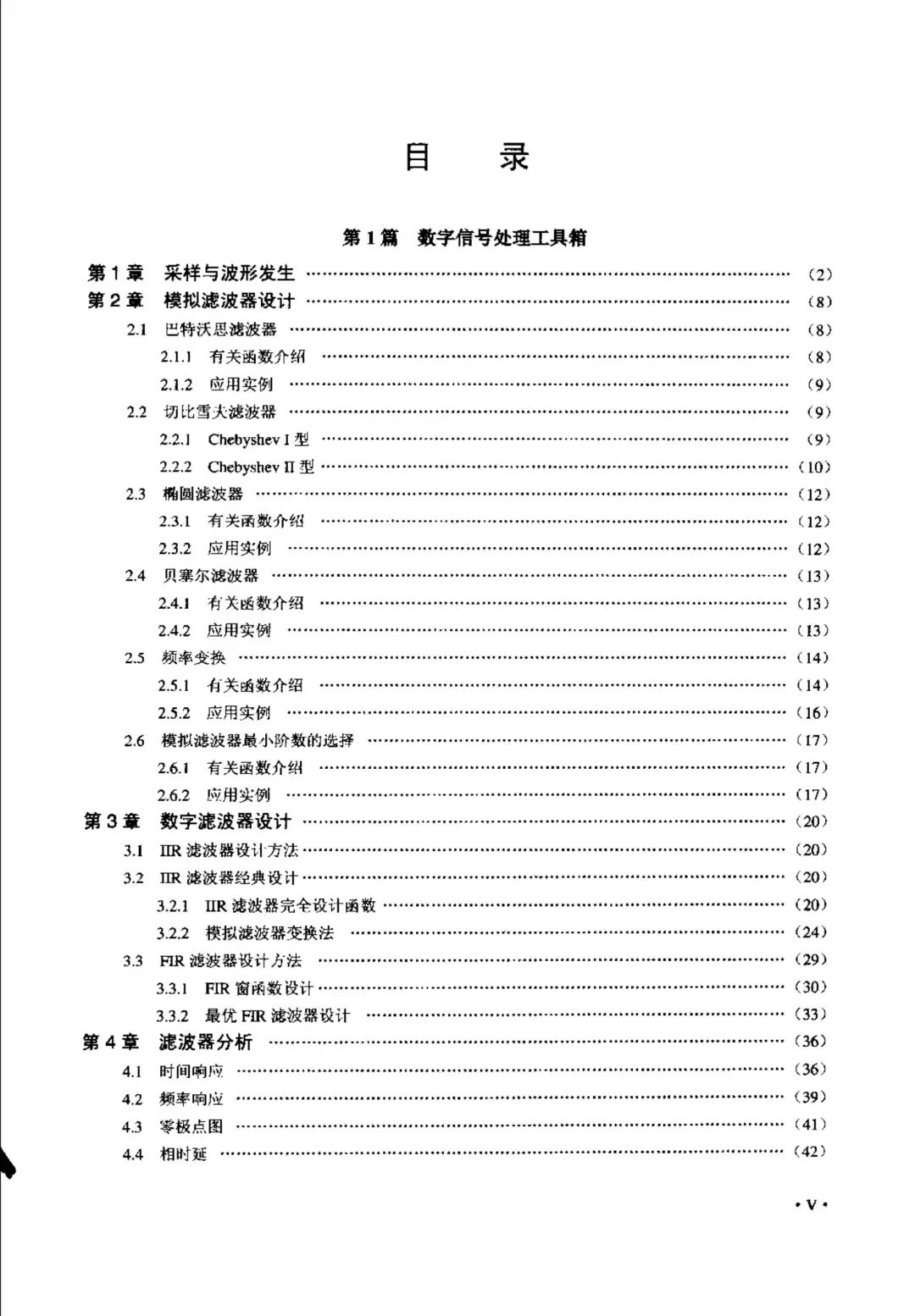
Part Two: Array Signal Processing Toolbox
This section details the installation methods, command usage steps, and application examples of the array signal processing toolbox. Through this content, readers can learn how to utilize MATLAB for array signal processing, including toolbox data types and variable descriptions, coordinates, and various conventions.
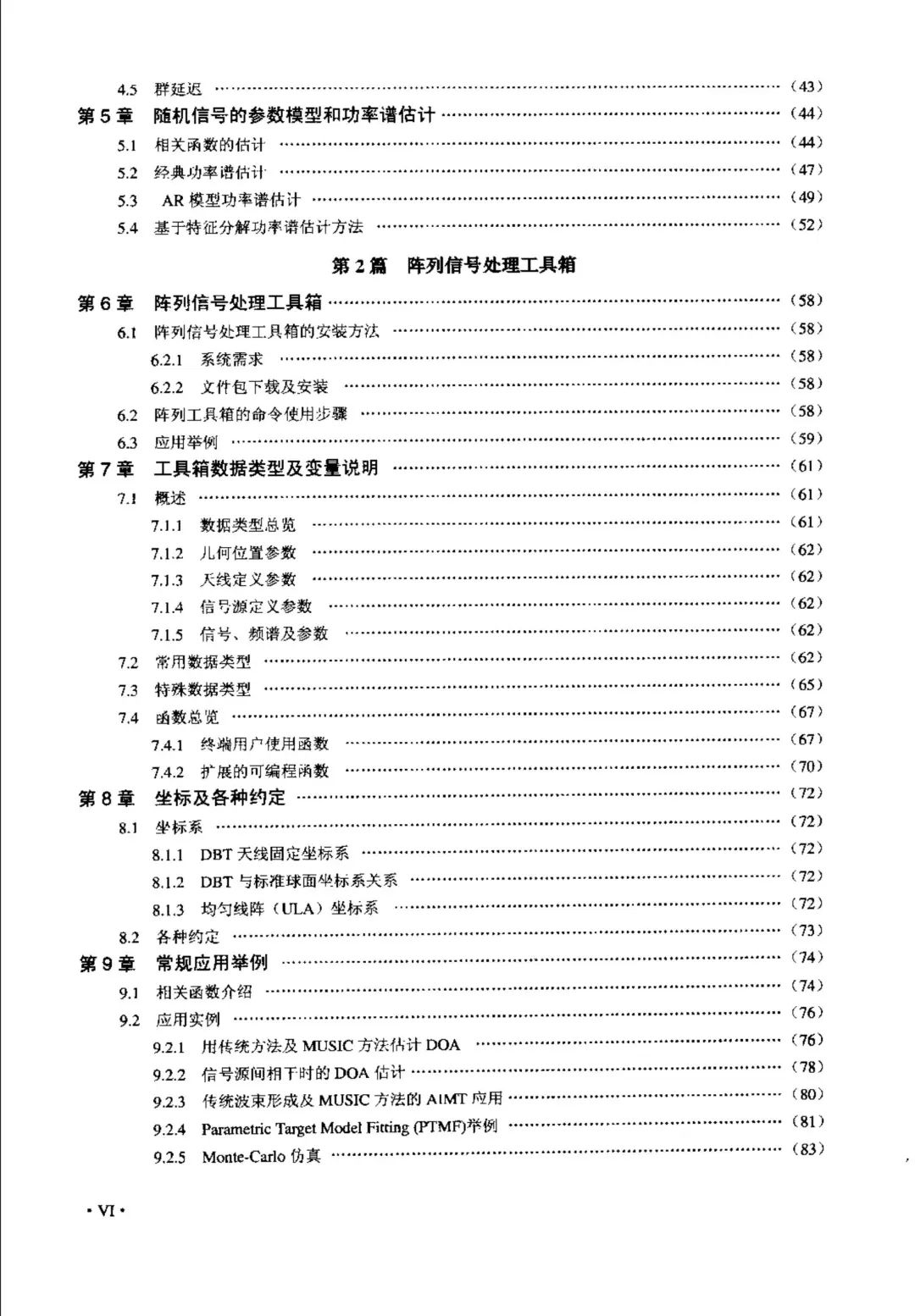
Part Three: Time-Frequency Analysis Toolbox
Time-frequency analysis is an important branch of signal processing. The book introduces the basic theories of time-frequency analysis, an overview of the toolbox, and toolbox functions, enabling readers to grasp the essence of time-frequency analysis. In particular, methods for analyzing non-stationary signals, such as short-time Fourier transform and wavelet transform, are explained in detail.
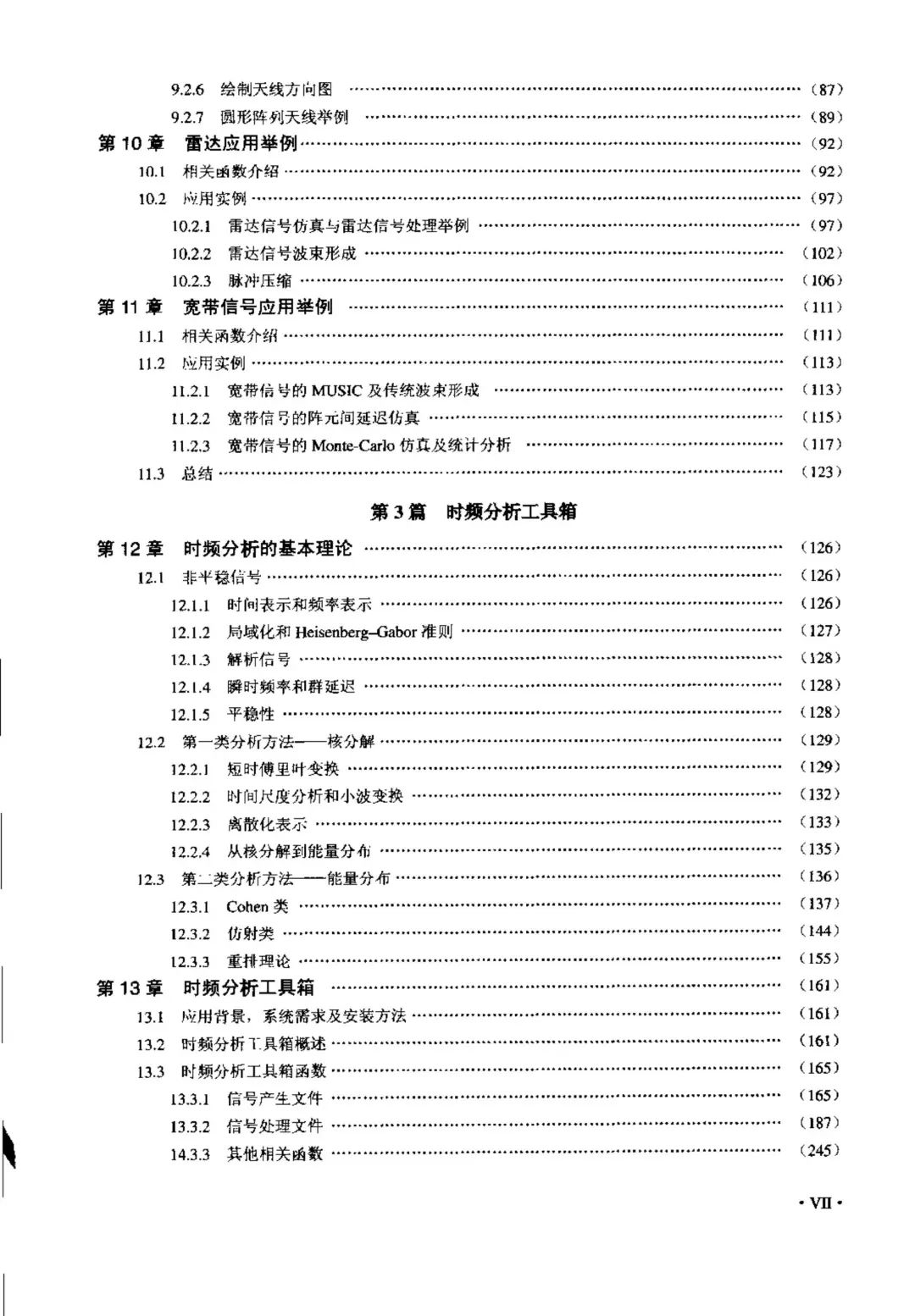
Part Four: Higher-Order Spectral Analysis Toolbox
Higher-order spectral analysis is an advanced technique in signal processing. The book introduces the installation and application of the higher-order spectral analysis toolbox, enabling readers to master the definitions, characteristics, and estimation methods of higher-order cumulants and higher-order spectra. Additionally, it covers non-parametric higher-order spectral estimation and parametric model higher-order spectral estimation, including ARMA models and their simulation generation, as well as parameter estimation for MA models.
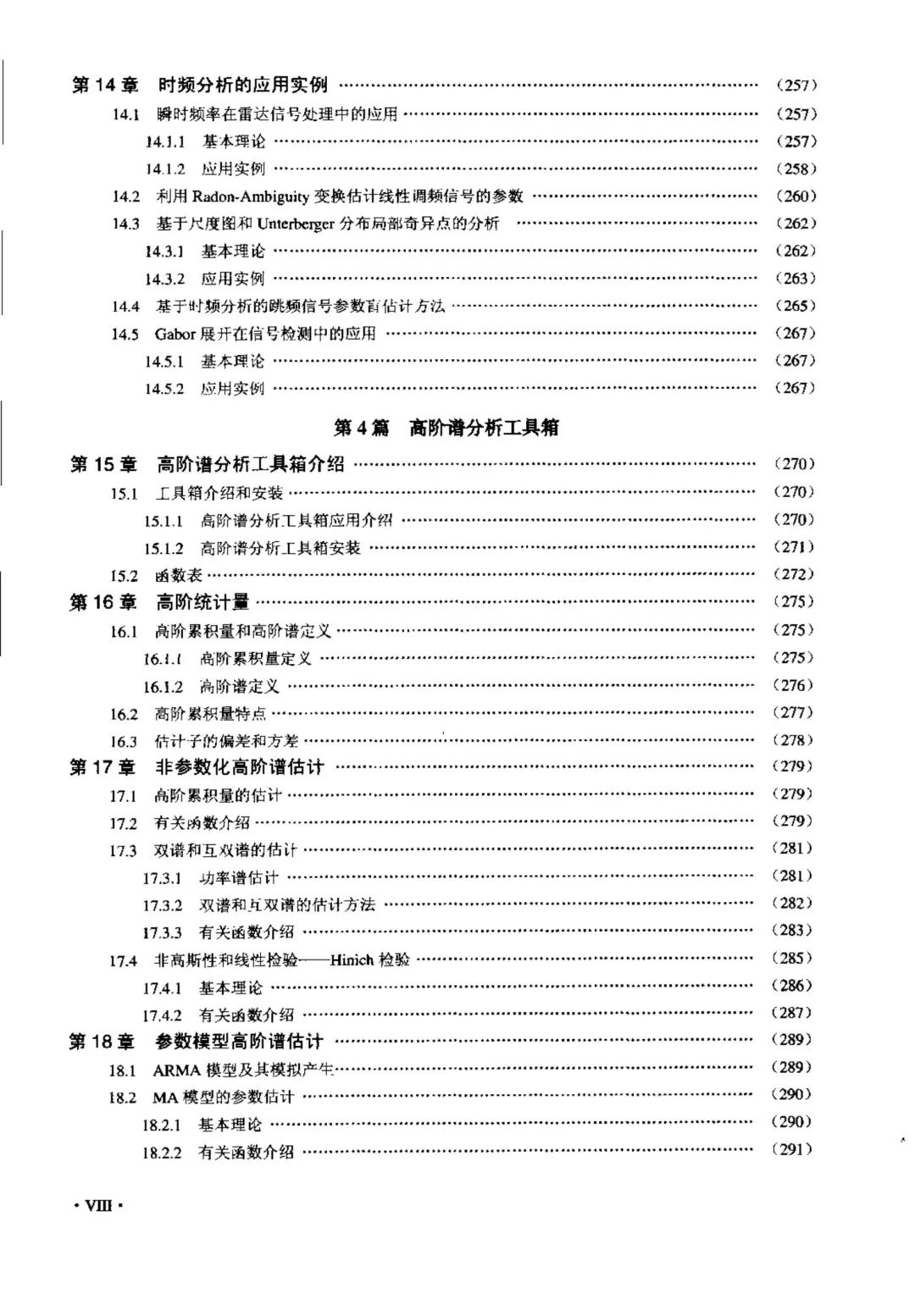
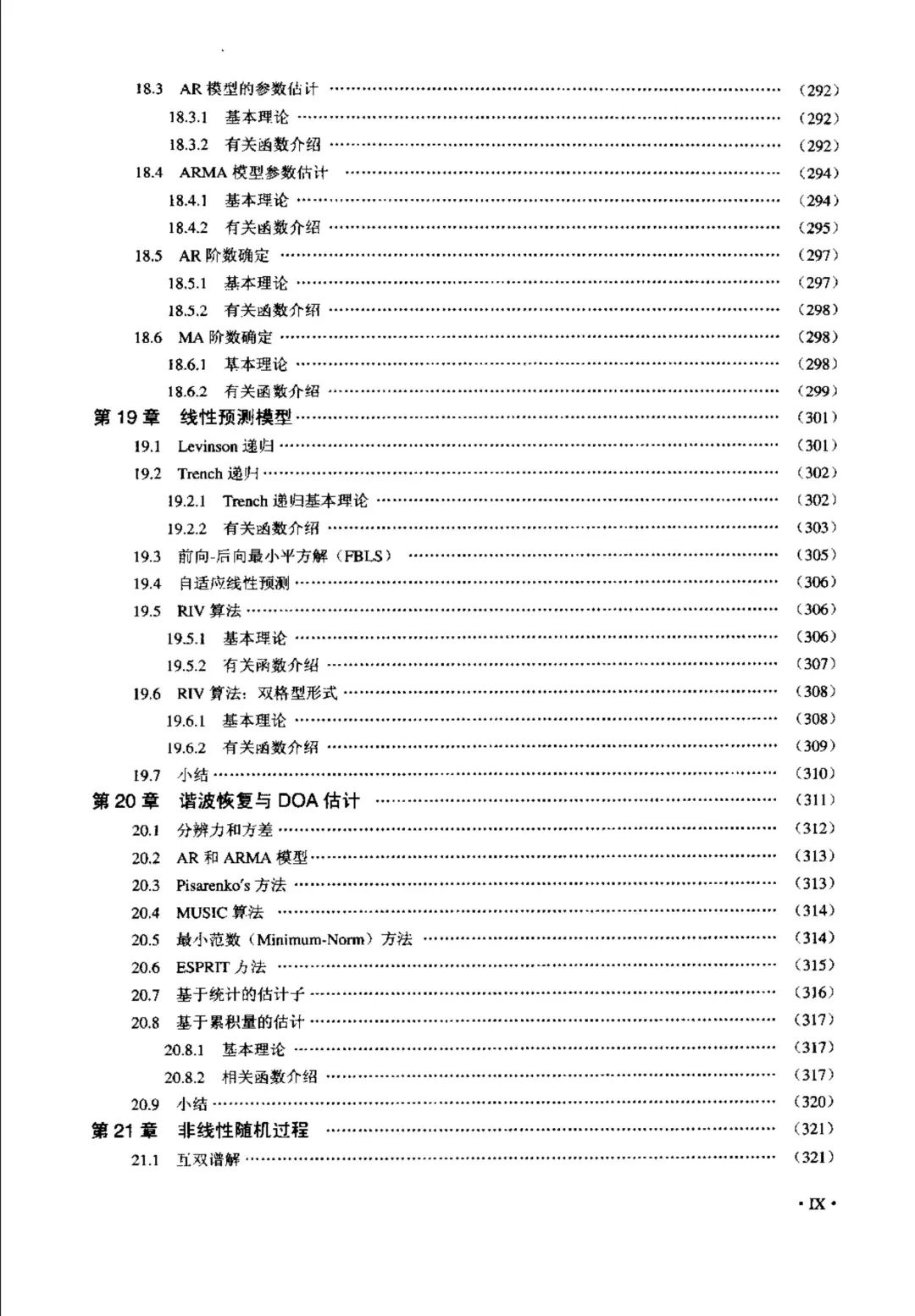
Part Five: Application Examples
The book presents numerous application examples, demonstrating the application of signal processing techniques in real-world problems. These examples cover various fields such as radar applications, broadband signal applications, and time-frequency analysis applications, allowing readers to combine theoretical knowledge with practical applications, enhancing their ability to solve real problems.
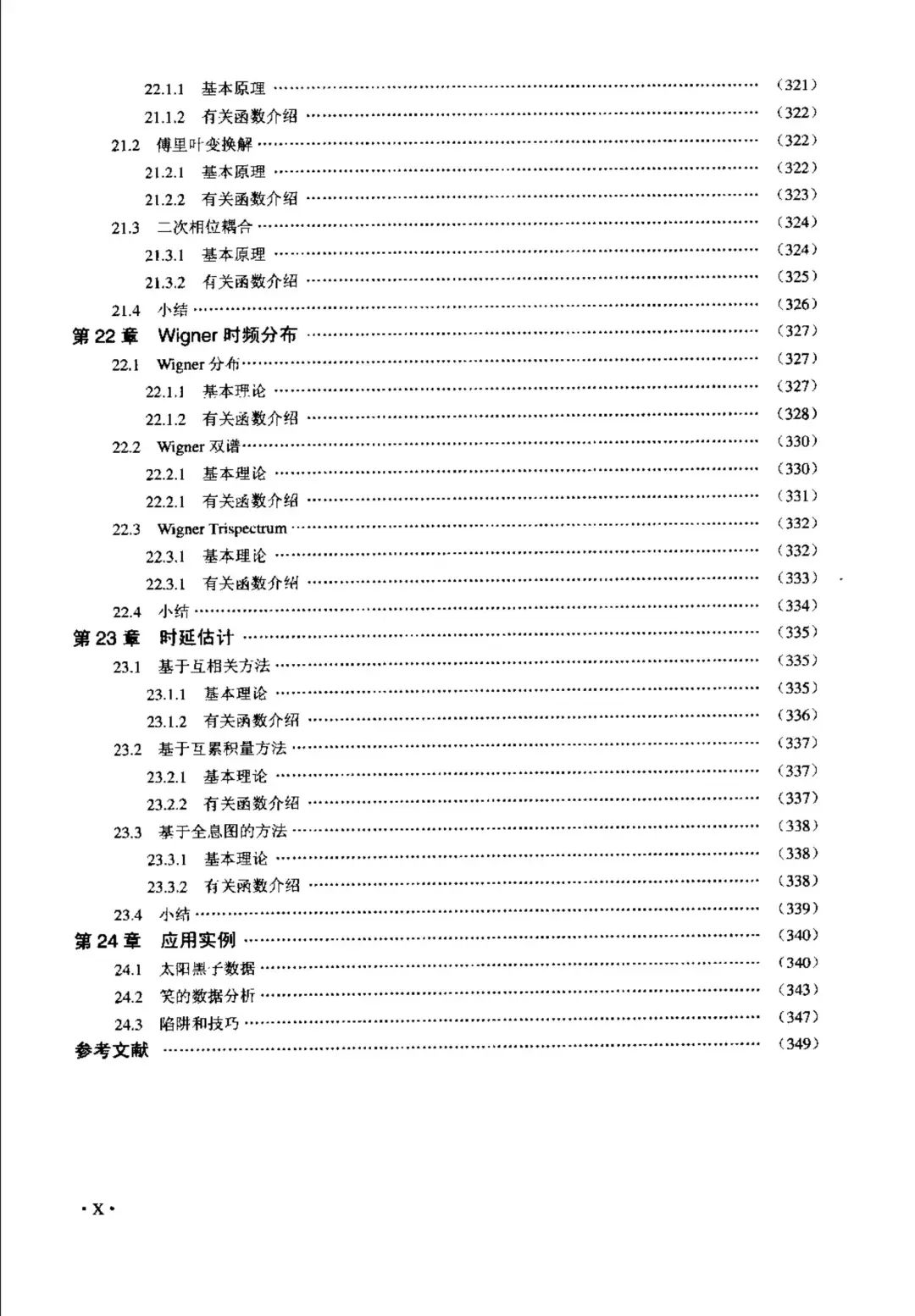
Whether you are a beginner in the field of signal processing or a professional with some foundation, this book can provide you with valuable references and guidance.
The book contains a total of 362 pages. If you need a PDF version, please scan to obtain! All rights reserved by the author. If there is any infringement, please contact for removal!





